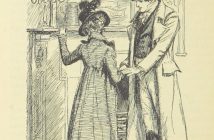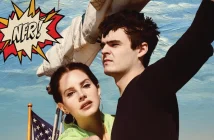On the 30th of August 2015, the legendary filmmaker Wes Craven died aged 76. Writer and director, he has had a hand in producing some of the most iconic and terrifying films to have ever existed. What’s more, Craven pioneered ideas and sub-genres to which almost all subsequent films which call themselves horrors owe at least a little something. He pioneered bloodshed with the violent slasher, before manipulating our minds and mastering films which overlap reality and the otherworldly to truly make the viewer embrace fear, long after the screen has gone dark.
Craven once said of his work that, “Horror films don’t create fear. They release it.” Today, some of The Edge’s horror fans got together to weigh in on what made Craven’s works so influential, lasting and, of course, scary.
 The Hills Have Eyes (1977)
The Hills Have Eyes (1977)
A cult classic that spawned a noughties remake, Craven’s original The Hills Have Eyes had a huge hand in defining the slasher film genre into which it fit. Featuring a suburban family hunted across a desert wilderness by a twisted family of sadistic cannibals, the film balanced suspense and drama with plain old gore to produce reactions of more than just revulsion, but proper psychological distress. Plus, it was the first in a series of inter-film references between Craven and Sam Raimi where, clearly beginning his dabblings with the fourth wall, the two seemed to poke fun at each other by saying, ‘this is your film poster in my movie. Yours is a horror film. Mine is real fear’.
Famously shot in a physically demanding location on cameras borrowed from a Californian pornographer, the film was a key part of the rapid evolution of the horror genre that took place in the ’70s and ’80s, as well as providing elements which would define the man’s own later works. A nightmare sequence gave Craven the idea to play with blurring the lines between dreams and reality, to unleash a pervading sense of fear that would stay with the viewer even after they left the theatre. Where did that idea take him, you ask?
Nightmare on Elm Street (1984)
 In 1984, A Nightmare on Elm Street was released featuring Johnny Depp, an unknown actor at the time, as a supernatural, teen-slaying, vengeful maniac who appears only in his victims’ slumberland – Freddy Kreuger; alongside the likes of Michael Myers and Norman Bates he has since joined the circle of the most infamous horror villains. He is a definitive boogeyman, omnipresent and always lurking in the dark.
In 1984, A Nightmare on Elm Street was released featuring Johnny Depp, an unknown actor at the time, as a supernatural, teen-slaying, vengeful maniac who appears only in his victims’ slumberland – Freddy Kreuger; alongside the likes of Michael Myers and Norman Bates he has since joined the circle of the most infamous horror villains. He is a definitive boogeyman, omnipresent and always lurking in the dark.
It is a film in which sleep, a seemingly ultimate relief from corporeal suffering, becomes an ultimate threat. Wes Craven is basically conveying a message: “you shall not sleep well upon watching my imaginative, genre-shaping, masterpiece”. And that is exactly what makes A Nightmare on Elm Street an exemplary horror movie; it blurs the boundary between reality and imagination causing the sort of gut-wrenching uneasiness that lingers too long for comfort.
Needless to say, it is an all-time must-see spine-chiller for all respectable fans of the genre.
Words by Martyna Połuszna
 Wes Craven’s New Nightmare (1994)
Wes Craven’s New Nightmare (1994)
Preceding Scream by two whole years, Wes Craven’s New Nightmare is the seventh film in the Nightmare on Elm Street series and the only sequel to be directed by Craven himself. The film is more than just a by-the-numbers sequel however, as Craven returns to the franchise to work some of the meta-magic that he would later apply to Scream.
The film distances itself from the continuity of the series, and is instead set in the ‘real world’, in which Freddy haunts the cast and crew responsible for the original films. A cult favourite, considered by its fans to be one of the smartest horror films of all time, this is perfect evidence that Craven always strived for creativity and was never content to simply rest on old laurels.
Words by Harrison Abbott
Scream (1996)
The pioneer of the ‘ironic slasher’ cycle, everything from I Know what you Did Last Summer to The Cabin in the Woods owes a little something to Wes Craven’s Scream. Released in 1996, the film changed the landscape of horror forever by slyly combining traditional slasher movie scares with meta-genre commentary. And there’s perhaps no better showcase of Craven’s directorial talent than the opening 20 minutes of the film.
As a serial killer playful toys with high school student Casey (Drew Barrymore) for a sustained and protracted scene, the audience feels secure in the knowledge that she’ll make it out; after all, it’s Drew Barrymore. However it soon transpires that that is not the case, and that the rule book has well and truly been thrown out the window. What’s so brilliant about Scream – besides the fact that it’s that rare film that manages to be both funny and scary – is how Wes Craven brilliantly deconstructs the conventions that he helped establish. It’s an impressive thing when a filmmaker manages to reinvent the same genre twice in one lifetime.
Words by Harrison Abbott
Scream 2 (1997)
 Few directors follow their original franchises through to the bitter end, especially when it comes to horror – but Wes Craven was never one to follow the norm. And so, although it may not quite reach the same levels as its genre-defining predecessor, Craven’s first Scream sequel is still very much a wonder to behold within the slasher genre.
Few directors follow their original franchises through to the bitter end, especially when it comes to horror – but Wes Craven was never one to follow the norm. And so, although it may not quite reach the same levels as its genre-defining predecessor, Craven’s first Scream sequel is still very much a wonder to behold within the slasher genre.
Scream 2 not only manages to continue the same whip-smart dialogue that won fans over originally, but it also does a fantastic job of escalating the series’ murder-mystery narrative meaning somehow, it never quite gets tired. The twists are still super effective and Craven’s trademark sense of humour still rings true. Whether it was a sequel or one of his original makings, you can’t deny the man really knew how to make a slasher film entertaining.
Words by Ben Robbins



